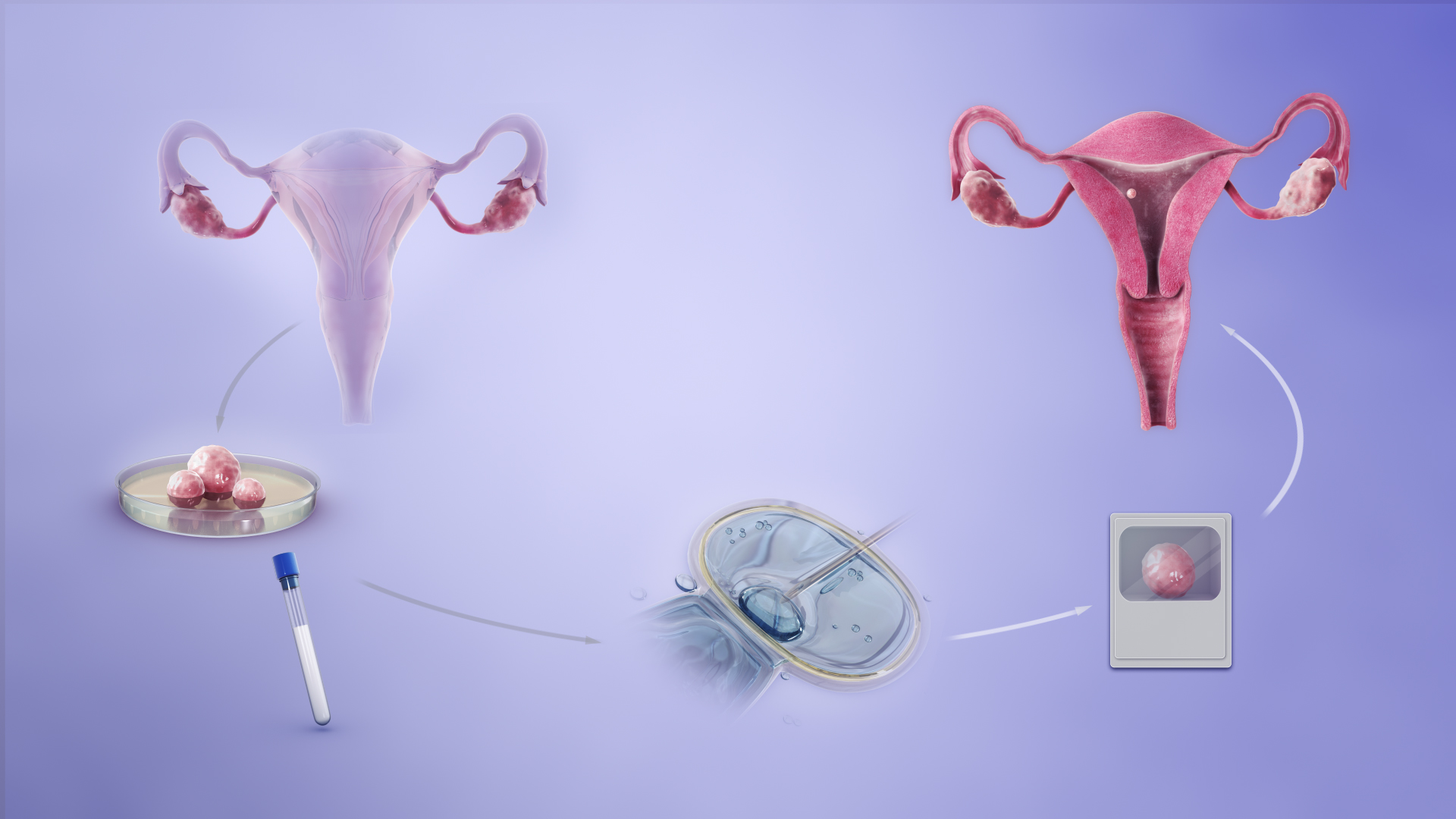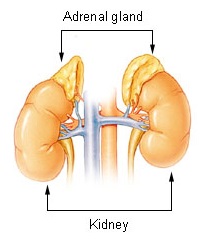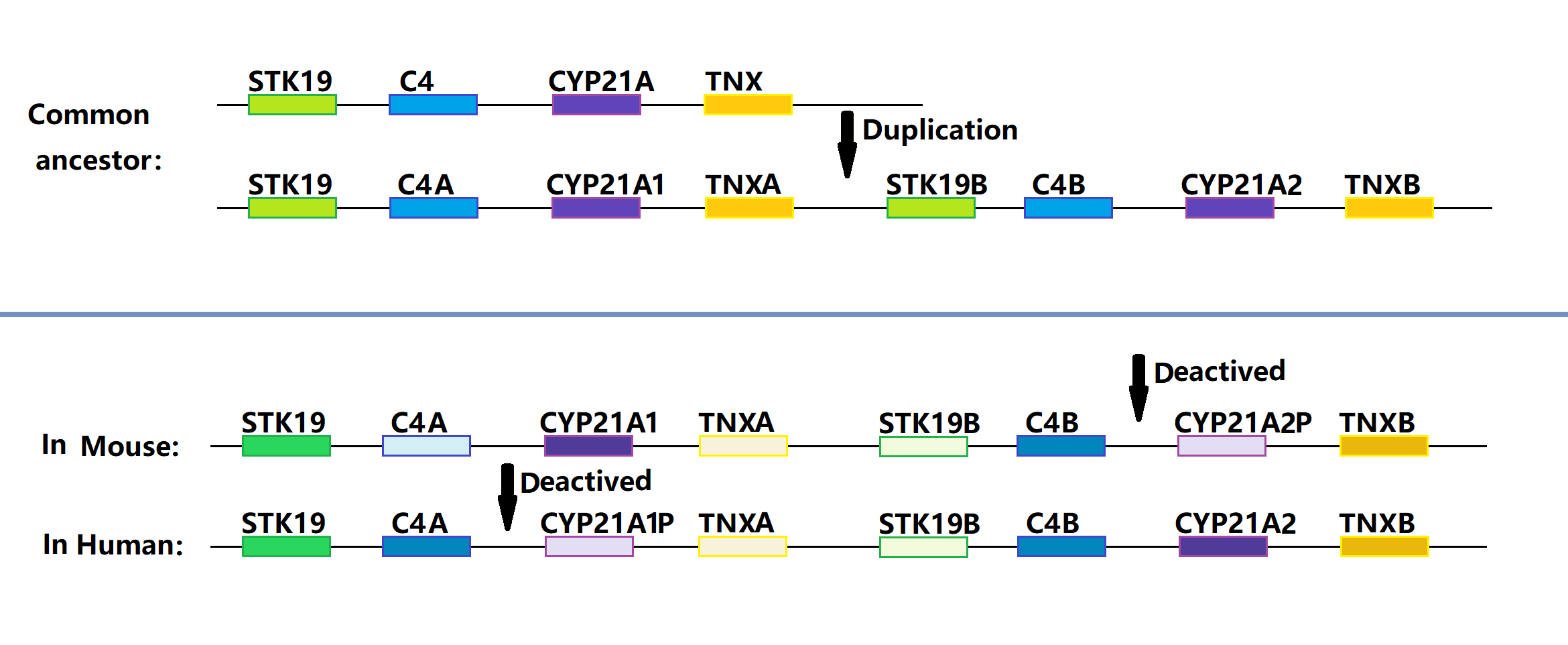|
Nonclassic Congenital Adrenal Hyperplasia
Late onset congenital adrenal hyperplasia (LOCAH), also known as nonclassic congenital adrenal hyperplasia (NCCAH or NCAH), is a milder form of congenital adrenal hyperplasia (CAH), a group of autosomal recessive disorders characterized by impaired cortisol synthesis that leads to variable degrees of postnatal androgen excess. The causes of LOCAH are the same as of classic CAH, and in the majority of the cases are the mutations in the ''CYP21A2'' gene resulting in corresponding activity changes in the associated P450c21 (21-hydroxylase) enzyme which ultimately leads to excessive androgen production. Other causes, albeit less frequent, are mutations in genes affecting other enzymes involved in steroid metabolism, like 11β-hydroxylase or 3β-hydroxysteroid dehydrogenase. It has a prevalence between 0.1% and 2% depending on population, and is one of the most common autosomal recessive genetic diseases in humans. The pathophysiology is complex and not all individuals are symptoma ... [...More Info...] [...Related Items...] OR: [Wikipedia] [Google] [Baidu] |
Congenital Adrenal Hyperplasia
Congenital adrenal hyperplasia (CAH) is a group of Genetic disorder#Autosomal recessive, autosomal recessive disorders characterized by impaired cortisol synthesis. It results from the deficiency of one of the five enzymes required for the Biosynthesis, synthesis of cortisol in the adrenal cortex. Most of these disorders involve excessive or deficient production of hormones such as glucocorticoids, mineralocorticoids, or sex steroids, and can alter development of primary sex characteristic, primary or secondary sex characteristics in some affected infants, children, or adults. It is one of the most common autosomal recessive disorders in humans. Types CAH can occur in various forms. The clinical presentation of each form is different and depends to a large extent on the underlying enzyme defect, its precursor retention, and deficient products. Classical forms appear in infancy and nonclassical forms appear in late childhood. The presentation in patients with classic CAH can be fu ... [...More Info...] [...Related Items...] OR: [Wikipedia] [Google] [Baidu] |
Hirsutism
Hirsutism is excessive body hair on parts of the body where hair is normally absent or minimal. The word is from early 17th century: from Latin ''hirsutus'' meaning "hairy". It usually refers to a male pattern of hair growth in a female that may be a sign of a more serious medical condition, especially if it develops well after puberty. Cultural stigma against hirsutism can cause much psychological distress and social difficulty. Discrimination based on facial hirsutism often leads to the avoidance of social situations and to symptoms of anxiety and depression. Hirsutism is usually the result of an underlying endocrine imbalance, which may be adrenal, ovarian, or central. It can be caused by increased levels of androgen hormones. The amount and location of the hair is measured by a Ferriman–Gallwey score. It is different from hypertrichosis, which is excessive hair growth anywhere on the body. Treatments may include certain birth control pills, antiandrogens, or ins ... [...More Info...] [...Related Items...] OR: [Wikipedia] [Google] [Baidu] |
Polycystic Ovary Syndrome
Polycystic ovary syndrome, or polycystic ovarian syndrome, (PCOS) is the most common endocrine disorder in women of reproductive age. The name is a misnomer, as not all women with this condition develop cysts on their ovaries. The name originated from the observation of cysts which form on the ovaries of some women with this condition. However, this is not a universal symptom and is not the underlying cause of the disorder. The primary characteristics of PCOS include hyperandrogenism, anovulation, insulin resistance, and neuroendocrinology, neuroendocrine disruption. Women may also experience Abnormal uterine bleeding, irregular menstrual periods, Menorrhagia, heavy periods, hirsutism, excess hair, acne, pelvic pain, infertility, difficulty getting pregnant, and patches of acanthosis nigricans, darker skin. Beyond its reproductive implications, PCOS is increasingly recognized as a multifactorial metabolic condition with significant long-term health consequences, including an ... [...More Info...] [...Related Items...] OR: [Wikipedia] [Google] [Baidu] |
Infertility
In biology, infertility is the inability of a male and female organism to Sexual reproduction, reproduce. It is usually not the natural state of a healthy organism that has reached sexual maturity, so children who have not undergone puberty, which is the body's start of fertility, reproductive capacity, are excluded. It is also a normal state in women after menopause. In humans, ''infertility'' is defined as the inability to become pregnant after at least one year of unprotected and regular sexual intercourse involving a male and female partner. There are many causes of infertility, including some that Assisted reproductive technology, medical intervention can treat. Estimates from 1997 suggest that worldwide about five percent of all heterosexual couples have an unresolved problem with infertility. Many more couples, however, experience involuntary childlessness for at least one year, with estimates ranging from 12% to 28%. Male infertility is responsible for 20–30% of infert ... [...More Info...] [...Related Items...] OR: [Wikipedia] [Google] [Baidu] |
ACTH Stimulation Test
The ACTH test (also called the cosyntropin, tetracosactide, or Synacthen test) is a medical test usually requested and interpreted by endocrinologists to assess the functioning of the adrenal glands' stress response by measuring the adrenal response to adrenocorticotropic hormone (ACTH; corticotropin) or another corticotropic agent such as tetracosactide (cosyntropin, tetracosactrin; Synacthen) or alsactide (Synchrodyn). ACTH is a hormone produced in the anterior pituitary gland that stimulates the adrenal glands to release cortisol, dehydroepiandrosterone (DHEA), dehydroepiandrosterone sulfate (DHEA-S), and aldosterone. During the test, a small amount of synthetic ACTH is injected, and the amount of cortisol (and sometimes aldosterone) that the adrenals produce in response is measured. This test may cause mild side effects in some individuals. This test is used to diagnose or exclude primary and secondary adrenal insufficiency, Addison's disease, and related conditio ... [...More Info...] [...Related Items...] OR: [Wikipedia] [Google] [Baidu] |
Massive Parallel Sequencing
Massive parallel sequencing or massively parallel sequencing is any of several high-throughput approaches to DNA sequencing using the concept of massively parallel processing; it is also called next-generation sequencing (NGS) or second-generation sequencing. Some of these technologies emerged between 1993 and 1998 and have been commercially available since 2005. These technologies use miniaturized and parallelized platforms for sequencing of 1 million to 43 billion short reads (50 to 400 bases each) per instrument run. Many NGS platforms differ in engineering configurations and sequencing chemistry. They share the technical paradigm of massive parallel sequencing via spatially separated, clonally amplified DNA templates or single DNA molecules in a flow cell. This design is very different from that of Sanger sequencing—also known as capillary sequencing or first-generation sequencing—which is based on electrophoretic separation of chain-termination products produced in ind ... [...More Info...] [...Related Items...] OR: [Wikipedia] [Google] [Baidu] |
Gene Conversion
Gene conversion is the process by which one DNA sequence replaces a homologous sequence such that the sequences become identical after the conversion. Gene conversion can be either allelic, meaning that one allele of the same gene replaces another allele, or ectopic, meaning that one Sequence homology#Paralogy, paralogous DNA sequence converts another. Allelic gene conversion Allelic gene conversion occurs during meiosis when homologous recombination between heterozygotic sites results in a mismatch in base pairing. This mismatch is then recognized and corrected by the cellular machinery causing one of the alleles to be converted to the other. This can cause non-Mendelian segregation of alleles in germ cells. Nonallelic/ectopic gene conversion Recombination occurs not only during meiosis, but also as a mechanism for repair of double-strand breaks (DSBs) caused by DNA damage. These DSBs are usually repaired using the sister chromatid of the broken duplex and not the homologous chrom ... [...More Info...] [...Related Items...] OR: [Wikipedia] [Google] [Baidu] |
Steroid 11β-hydroxylase
Steroid 11β-hydroxylase, also known as steroid 11β-monooxygenase, is a steroid hydroxylase found in the zona glomerulosa and zona fasciculata of the adrenal cortex. Named officially the cytochrome P450 11B1, mitochondrial, it is a protein that in humans is encoded by the ''CYP11B1'' gene. The enzyme is involved in the biosynthesis of Adrenal gland, adrenal corticosteroids by catalyzing the addition of hydroxyl groups during oxidation reactions. Gene The ''CYP11B1'' gene encodes 11β-hydroxylase, a member of the cytochrome P450 superfamily of enzymes. The cytochrome P450 proteins are monooxygenases that catalyze many reactions involved in drug metabolism and synthesis of cholesterol, steroids and other lipids. The product of this CYP11B1 gene is the 11β-hydroxylase protein. This protein localizes to the mitochondrial inner membrane and is involved in the conversion of various steroids in the adrenal cortex. Transcript variants encoding different isoforms have been noted for th ... [...More Info...] [...Related Items...] OR: [Wikipedia] [Google] [Baidu] |
21-hydroxylase
Steroid 21-hydroxylase is a protein that in humans is encoded by the ''CYP21A2'' gene. The protein is an enzyme that hydroxylates steroids at the C21 position on the molecule. Naming conventions for enzymes are based on the substrate acted upon and the chemical process performed. Biochemically, this enzyme is involved in the biosynthesis of the adrenal gland hormones aldosterone and cortisol, which are important in blood pressure regulation, sodium homeostasis and blood sugar control. The enzyme converts progesterone and 17α-hydroxyprogesterone into 11-deoxycorticosterone and 11-deoxycortisol, respectively, within metabolic pathways which in humans ultimately lead to aldosterone and cortisol creation—deficiency in the enzyme may cause congenital adrenal hyperplasia. Steroid 21-hydroxylase is a member of the cytochrome P450 family of monooxygenase enzymes that use an iron-containing heme cofactor to oxidize substrates. In humans, the enzyme is localized in endoplasmic ... [...More Info...] [...Related Items...] OR: [Wikipedia] [Google] [Baidu] |
Hypothalamic–pituitary–adrenal Axis
The hypothalamic–pituitary–adrenal axis (HPA axis or HTPA axis) is a complex set of direct influences and feedback interactions among three components: the hypothalamus (a part of the brain located below the thalamus), the pituitary gland (a pea-shaped structure located below the hypothalamus), and the adrenal (also called "suprarenal") glands (small, conical organs on top of the kidneys). These organs and their interactions constitute the HPS axis. The HPA axis is a major neuroendocrine system that controls reactions to stress and regulates many body processes, including digestion, immune responses, mood and emotions, sexual activity, and energy storage and expenditure. It is the common mechanism for interactions among glands, hormones, and parts of the midbrain that mediate the general adaptation syndrome (GAS). While steroid hormones are produced mainly in vertebrates, the physiological role of the HPA axis and corticosteroids in stress response is so fun ... [...More Info...] [...Related Items...] OR: [Wikipedia] [Google] [Baidu] |
Adrenarche
Adrenarche is an early stage in sexual maturation that happens in some higher primates (including humans), typically peaks at around 20 years of age, and is involved in the development of pubic hair, body odor, skin oiliness#Oily skin, skin oiliness, axillary hair, sexual attraction/sexual desire/increased libido and mild acne. During adrenarche the adrenal glands secrete increased levels of weak adrenal androgens, including dehydroepiandrosterone (DHEA), dehydroepiandrosterone sulfate (DHEA-S), and androstenedione (A4), but without increased cortisol levels. Adrenarche is the result of the development of a new zone of the adrenal cortex, the zona reticularis. Adrenarche is a process related to puberty, but distinct from hypothalamic–pituitary–gonadal axis (HPG axis) maturation and function. Occurrence Adrenarche occurs starting at the age of 6 years. After the first year of life, the adrenal glands secrete very low levels of adrenal androgens. Adrenarche begins on avera ... [...More Info...] [...Related Items...] OR: [Wikipedia] [Google] [Baidu] |






